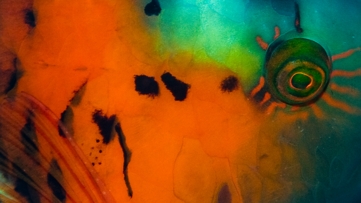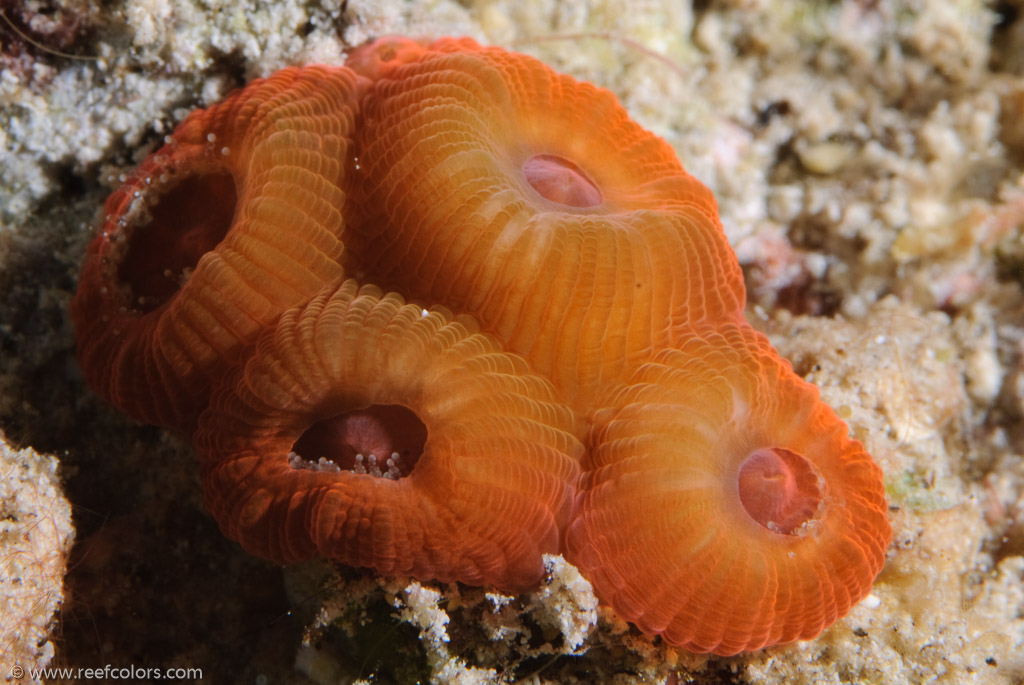
Colors of the Reef
Underwater Photography
| Home |
| Colors of the Reef |
| Search the Reef |
| Science and the Reef |
| Equipment |
| New |
| Links |
| Contact |
| Interna |
Fluorescence
Fluorescence is a phenomenon producing colors by a mechanism entirely different from absorption in normal dyes. If a normal (non fluorescing) dye is irradiated with white light (which is a mixture of all wavelengths of the visible part of the spectrum) some parts of the light are absorbed, the rest is transmitted or reflected. This transmitted or reflected light is missing the absorbed color, and thus is not white any more. What happens to the absorbed light? It is transformed into thermal energy, the dye is getting warm by absorbing light. This is why a black car (absorbing most light) in the sun is getting hotter than a white car (reflecting most light).
 Fluorescent dyes work differently. The absorbed light is not transformed into heat, but rather to light of a different wavelength, which is emitted. Thus, a fluorescent dye becomes a source of light by itself (like a little lamp). This is the reason why fluorescent dyes look brighter than normal dyes.
Fluorescent dyes work differently. The absorbed light is not transformed into heat, but rather to light of a different wavelength, which is emitted. Thus, a fluorescent dye becomes a source of light by itself (like a little lamp). This is the reason why fluorescent dyes look brighter than normal dyes.Since the transformation of light from absorption to emission is not completely efficient, there is a loss of energy and intensity of the emitted light compared to the absorbed light. The wavelength of the emitted light is shifted to the red and the intensity is lower than that of the absorbed light. Thus, if a fluorescent dye is irradiated with blue light, the emitted light might be green or even red (this is called a red-shift). Normally, you need lamps with special filters and a dark environment (night dive) to see fluorescence. Otherwise the normal reflected light will shine out the fluorescence. Here is an example of a coral that shows a bright orange fluorescence that can be easily seen even during the day. More details on underwater fluorescence and special eqiupment you can find at NightSea (see links page), a company specialized in this topic.

